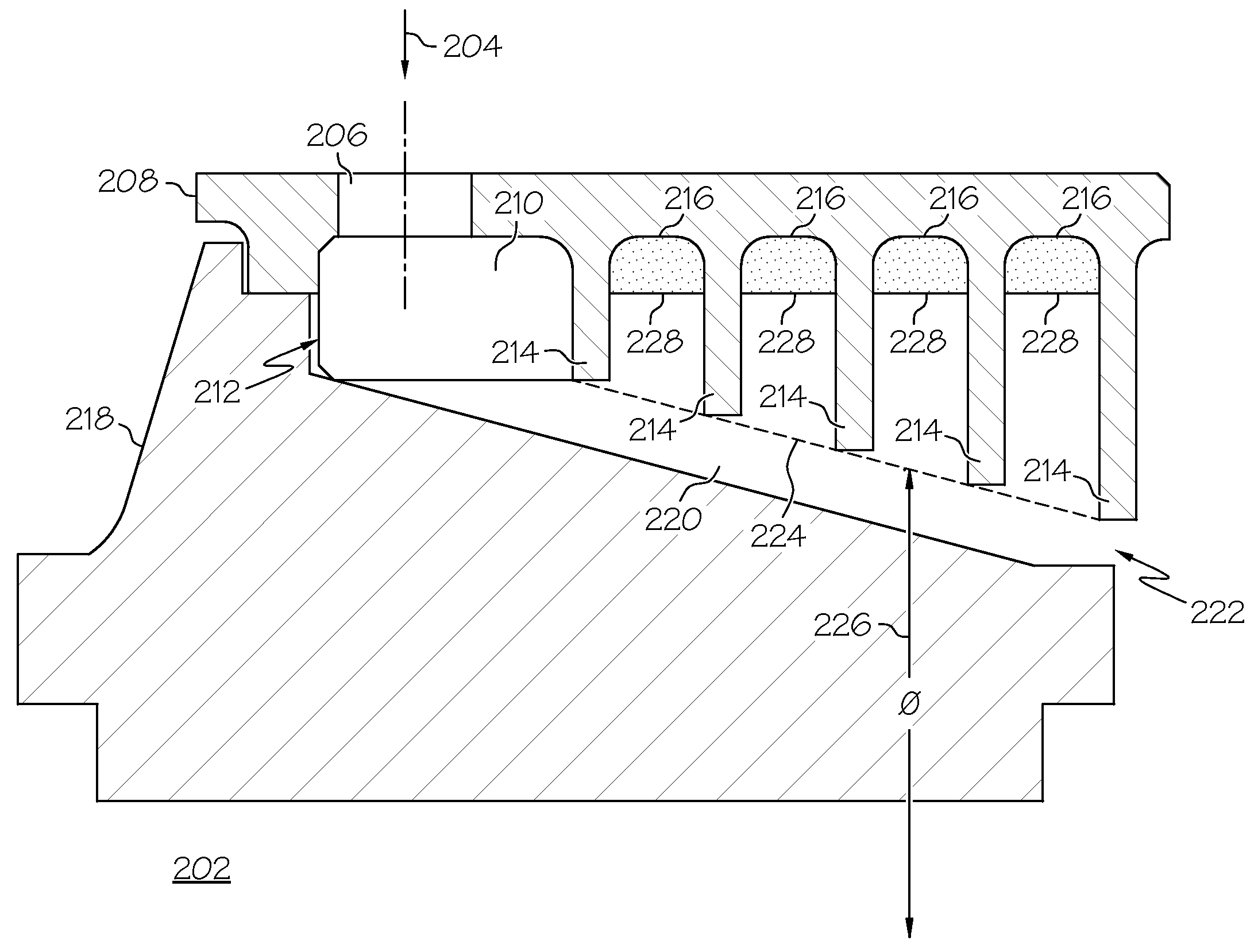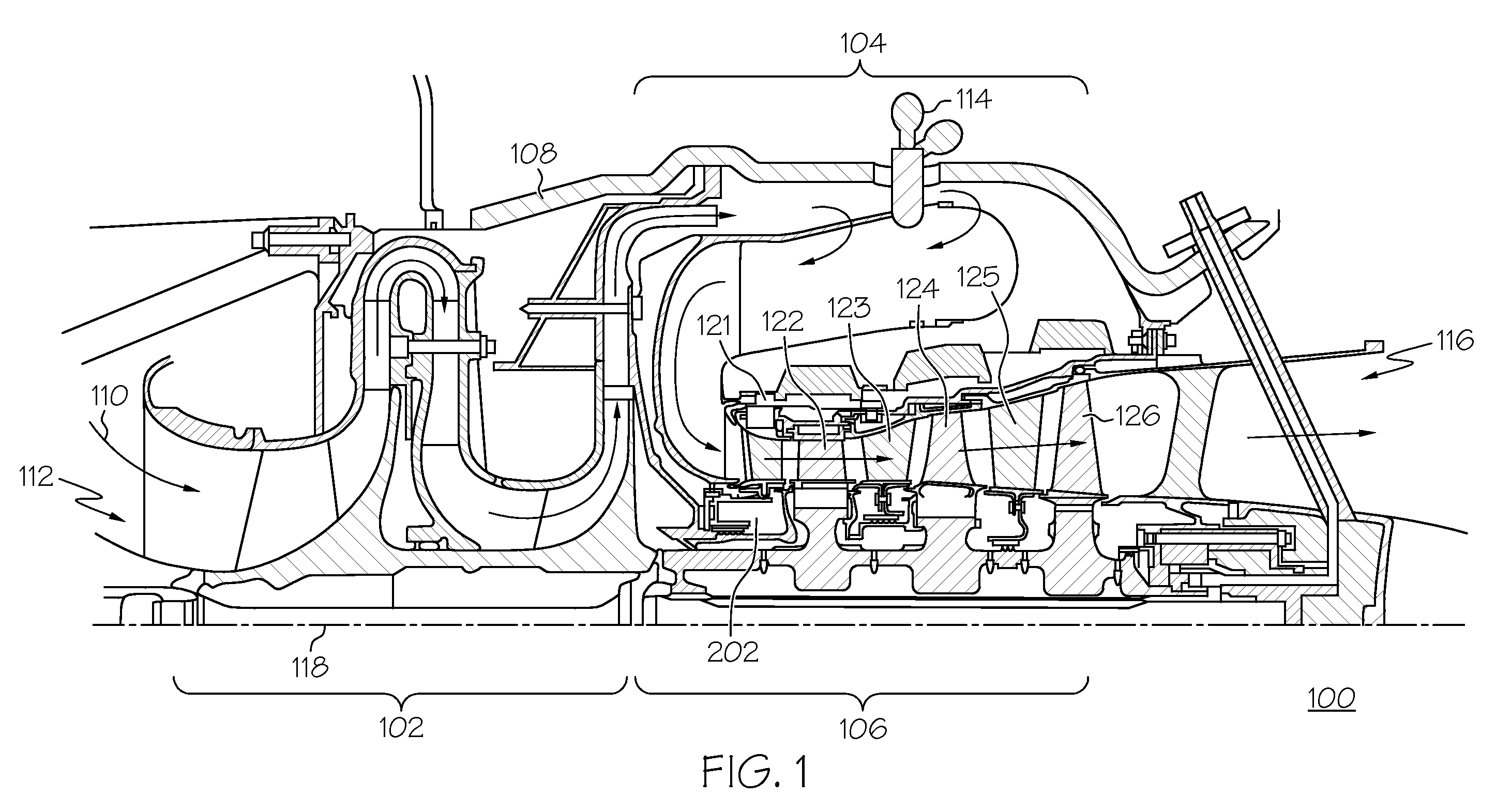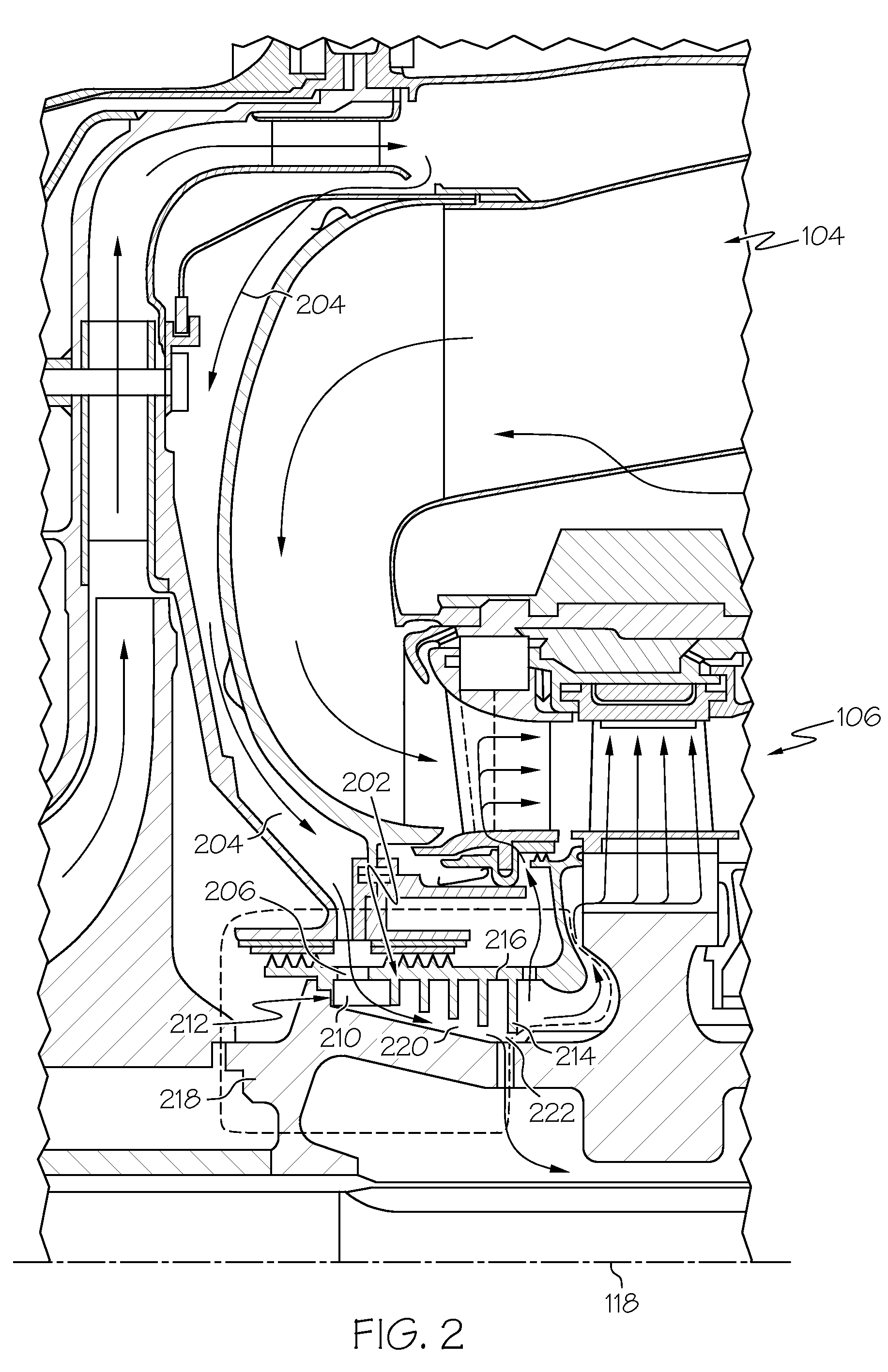Turbine cooling air centrifugal particle separator
a technology of centrifugal particle separator and turbine engine, which is applied in the direction of machines/engines, efficient propulsion technologies, liquid fuel engines, etc., can solve the problems of reducing cooling effectiveness, affecting the durability of turbine engines, and affecting the efficiency of turbine engines, so as to achieve efficient removal of particles from the air and reduce the diameter
- Summary
- Abstract
- Description
- Claims
- Application Information
AI Technical Summary
Benefits of technology
Problems solved by technology
Method used
Image
Examples
Embodiment Construction
[0019]The following detailed description of the invention is merely exemplary in nature and is not intended to limit the invention or the application and uses of the invention. Furthermore, there is no intention to be bound by any theory presented in the preceding background of the invention or the following detailed description of the invention.
[0020]Before proceeding with a detailed description, it is to be appreciated that the described embodiment is not limited to use in conjunction with a particular type of turbine engine, or even to use in a turbine. Thus, although the present embodiment is, for convenience of explanation, depicted and described as being implemented in an auxiliary power unit (APU), it will be appreciated that it can be implemented in various other types of turbines, and in various other systems and environments.
[0021]An APU is, in most instances, a gas turbine engine that includes a compressor, a combustion system, and a turbine. During operation of the APU, ...
PUM
 Login to View More
Login to View More Abstract
Description
Claims
Application Information
 Login to View More
Login to View More - R&D
- Intellectual Property
- Life Sciences
- Materials
- Tech Scout
- Unparalleled Data Quality
- Higher Quality Content
- 60% Fewer Hallucinations
Browse by: Latest US Patents, China's latest patents, Technical Efficacy Thesaurus, Application Domain, Technology Topic, Popular Technical Reports.
© 2025 PatSnap. All rights reserved.Legal|Privacy policy|Modern Slavery Act Transparency Statement|Sitemap|About US| Contact US: help@patsnap.com



